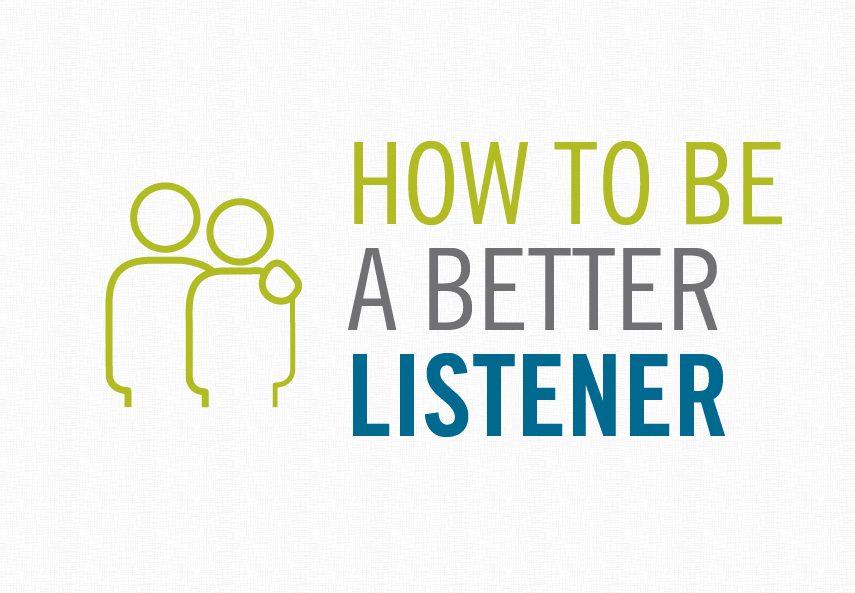How to be a better listener
As we all deal with the ongoing mental health impact of the pandemic, it’s more important than ever that you’re supporting the people in your life and receiving support when you need it.
The number one thing you can do when someone needs support is: listen. All of us have the ability to support another person going through a difficult time, not by finding the solution to their problem, or acquiring the skills of a mental health professional, but simply by actively listening and being present with the other person.
At Distress Centre, listening is our business. These tips come directly from our volunteer training.
Here’s how you can be a better listener.
Active Listening
“Most of us don’t listen with the intent to understand. We listen with the intent to reply.” – Stephen Covey
We follow the Roberts Model of Crisis Intervention at Distress Centre. Within that, active listening is the primary mode of identifying feelings and emotions. Listening actively means being present and focused on what the other person is saying and listening to understand, not just waiting until it’s your turn to speak. It means staying with the other person’s agenda, their definition of the problem and working towards understanding.
Here are some tips to follow to become a better listener through active listening.
1. Be present:
Pay attention to what the other person is saying. If your mind wanders (which is normal), pull it back to focus on the other person. If you think of something you’d like to say in response, let it go. You don’t want to miss out on what the other person is saying because you’re focused on your response. By the time you’re sharing that thought you’ve held onto for ten minutes, it may no longer be relevant.
2. Attend and acknowledge:
This involves giving verbal and non-verbal cues to assure the other person that you are present and listening, such as maintaining eye-contact and nodding. These cues will happen naturally if you are listening actively. You don’t want to stop being present because you’re distracted with finding the right time to nod instead of really listening to what the other person is saying.
3. Repeat, summarize, rephrase:
Repeat, summarize or rephrase feelings, experiences or key themes back to the person, to help to ensure understanding, show that you’re listening and validate what they’re saying. Ex: “It really struck me when you said that comment made you feel weak. That’s not a fun feeling.”
4. Check your perceptions:
Find out if your interpretations and perceptions of the other person’s experiences and feelings are valid and accurate. Ex: “It sounds like you found the comment your co-worker made to be condescending, is that right?”
5. Question in a supportive way:
Similar to the previous tip, question in a supportive way that requests more information or adds clarification. Ex: “When you say that he betrayed you, can you tell me more what you mean by that?”
6. Get comfortable with silence:
A pause in speaking is not an invitation for you to start talking. Give the other person time to think as well as talk.
Things to avoid
1. Passive listening:
You don’t acknowledge what they’re saying with verbal and non-verbal cues, rephrase or reflect to show understanding, or ask clarifying questions. It’s a one-way version of communication that isn’t usually meaningful for the other person.
2. Inadequate listening:
Though you may appear to be listening, your mind is elsewhere. Instead of really taking in what the other person is saying, you’re thinking about your perfect response and eagerly awaiting your chance to talk. Or, your mind is wandering completely. If you’re struggling to stay focused on the conversation, try mentally repeating their words as they say them.
3. Judgement:
If your goal is to be a supportive friend, judgement has no place in the conversation. Avoid using “why” questions that can come off as accusatory.
4. Interrupting:
Avoid cutting in, no matter how important you think your thought or opinion is. Wait till they’re completely finished speaking before you respond.
5. Problem solving:
Most problems don’t have an easy solution. When someone needs to talk, the best thing you can do is listen, validate what they’re experiencing and after that, ask them how you can best help. Listing off a bunch of possible solutions is rarely helpful and often feels invalidating.
6. Sympathy instead of empathy:
A sympathetic approach means you feel bad for the other person but you aren’t feeling with the other person. Using empathy means you are taking the other person’s perspective, understanding what they’re experiencing and being there with them in a non-judgemental way. Being empathetic can be hard because it requires vulnerability. As Brené Brown says, in order to connect with the other person, you have to connect with those feelings inside of yourself. But that vulnerability is what makes the conversation meaningful for both of you.
If you follow these tips and actively listen to the other person, their problems may not be solved, but they will feel supported, understood and heard.
If you want to learn about helping someone through a crisis, check out this guide on helping a friend in distress. If you are concerned that someone is having suicidal thoughts, here’s what you can do.
See all our mental health articles.

